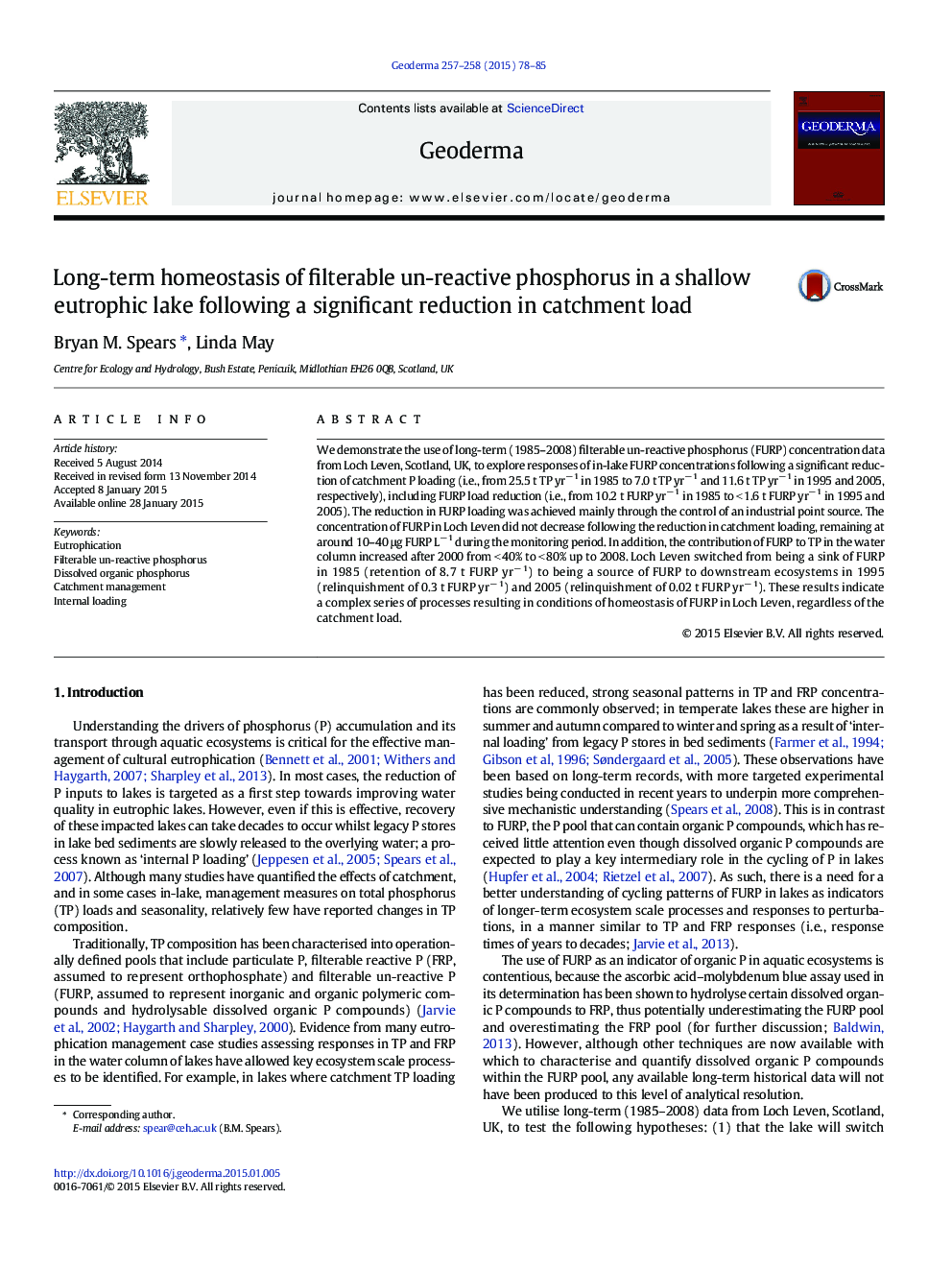| کد مقاله | کد نشریه | سال انتشار | مقاله انگلیسی | نسخه تمام متن |
|---|---|---|---|---|
| 4573130 | 1629457 | 2015 | 8 صفحه PDF | دانلود رایگان |
• We examined long-term changes in lake water FURP seasonality in response to catchment management.
• In-lake FURP was unaffected by significant reduction of loadings from the catchment.
• In-lake FURP was highest in autumn indicating internal cycling processes.
• Processes are acting in lakes to provide homeostasis of organic phosphorus in the water column.
• Long-term FURP data provide insight into ecosystem processes, albeit at low analytical resolution.
We demonstrate the use of long-term (1985–2008) filterable un-reactive phosphorus (FURP) concentration data from Loch Leven, Scotland, UK, to explore responses of in-lake FURP concentrations following a significant reduction of catchment P loading (i.e., from 25.5 t TP yr− 1 in 1985 to 7.0 t TP yr− 1 and 11.6 t TP yr− 1 in 1995 and 2005, respectively), including FURP load reduction (i.e., from 10.2 t FURP yr− 1 in 1985 to < 1.6 t FURP yr− 1 in 1995 and 2005). The reduction in FURP loading was achieved mainly through the control of an industrial point source. The concentration of FURP in Loch Leven did not decrease following the reduction in catchment loading, remaining at around 10–40 μg FURP L− 1 during the monitoring period. In addition, the contribution of FURP to TP in the water column increased after 2000 from < 40% to < 80% up to 2008. Loch Leven switched from being a sink of FURP in 1985 (retention of 8.7 t FURP yr− 1) to being a source of FURP to downstream ecosystems in 1995 (relinquishment of 0.3 t FURP yr− 1) and 2005 (relinquishment of 0.02 t FURP yr− 1). These results indicate a complex series of processes resulting in conditions of homeostasis of FURP in Loch Leven, regardless of the catchment load.
Figure optionsDownload as PowerPoint slide
Journal: Geoderma - Volumes 257–258, November 2015, Pages 78–85
